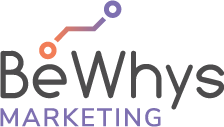To build a successful website for your business, there are certain steps you should follow. The purpose of a website is to support your business and engage your audience where they are (which, today, is online). It’s critical to have a professional, functional online presence that’s actually working for you rather than against you. Here’s how to do it cost-effectively.
Choose a domain name
Choose something that’s easy—easy to say and easy to type. You want people to commit your site to memory as much as possible, so making it your business name (or a very simple version of that) is typically best. Use “.com” whenever possible and try to avoid symbols. Think about when you need to tell someone about your site over the phone. You want it to rattle off the tongue; you don’t want to have to do any spelling.
Sites like GoDaddy and instantdomainsearch.com are great places to start. Type in the domain you want and it will tell you if it’s available. You can purchase the domain right from here—usually it’s a one-time fee to secure the domain for 4 or 5 years.
Select a web host
Hosting is arguably the most important part of building a successful business website. It comes down to security and backups. Choose a reliable, tried and true website host and you can save money and headaches that come from a compromised site.
WPEngine is a recommended host that works seamlessly with WP-designed sites and has various tiers of hosting service, depending on your traffic or the size of your site.
You’ll select your domain and then your host. This is where your website files will live, and should your web designer ever need to access them, this is where he or she will look.
Create a content map
At this point, it’s important to make a map of what you want your website to include and how you want to organize everything. Start with listing everything you want your website to do: Do you want to convert sales? Drive people to your store or to make an appointment? Educate and drive your brand? This is how you will determine the different pieces of your site and its purpose.
Once you’ve determined what you want your site to do, now it’s time to think about all the information you want to include. What do customers need to know about you? What do they want to know? Make sure you include who you are and what you do as clearly as possible to keep people on the site as long as possible. The more clear and engaging the better!
It’s important to organize your site’s content into a map so you can visualize the basic structure and make sure nothing is left out once you get started building.
Select a CMS
Once you get set up with a domain and a host and you know your basic structure, it’s time to look for a content management system. WordPress is the most flexible of all the CMSs out there, and it’s your best bet to create a customized website. Other options are Wix, Weebly, Squarespace and others, but to get the fully customized design you’re looking for, WordPress is the industry standard.
Decide on a theme
When you decide which CMS you want to go with, it’s time to choose a theme or template for your website. Themes are already-built site templates that have most of the features that you want. There are literally thousands of them out there, and often they’re customized for certain industries. This is the way to go in order to avoid the high costs of a completely from-scratch site. Designers have put in the coding and design time to create a template that really delivers. They typically cost anywhere from $40 to $100 and they come with most (though not all) of the features you’ll need to build the site you want.
That said, because you’re not opting for a completely customized site, the theme might not be a perfect fit to your vision, which means you may need some additional design help as the website is being built.
The trick is to choose the theme that delivers the best information possible to your audience in the most beautiful and functional way. There are certain things to look for when deciding which theme is best for your business (time to load, demo files included, mobile optimization), and every theme is not created equal.
Upload
Purchase and download the theme, and upload it onto your hosting platform. Once it’s up, you can begin to upload all the content from your content map onto the site. This takes a little time and may require a little design work to get it perfect, but it’s absolutely quicker and more cost effective than building a website from scratch.
BeWhys Marketing specializing on building these types of websites for clients who are looking for a cost-effective way to build a website. Contact us for more details.
Want more? Tips to Get the Most out of Your Business Website
How to Build a Cost-Effective Website August 31st, 2017Chelsea Iversen






